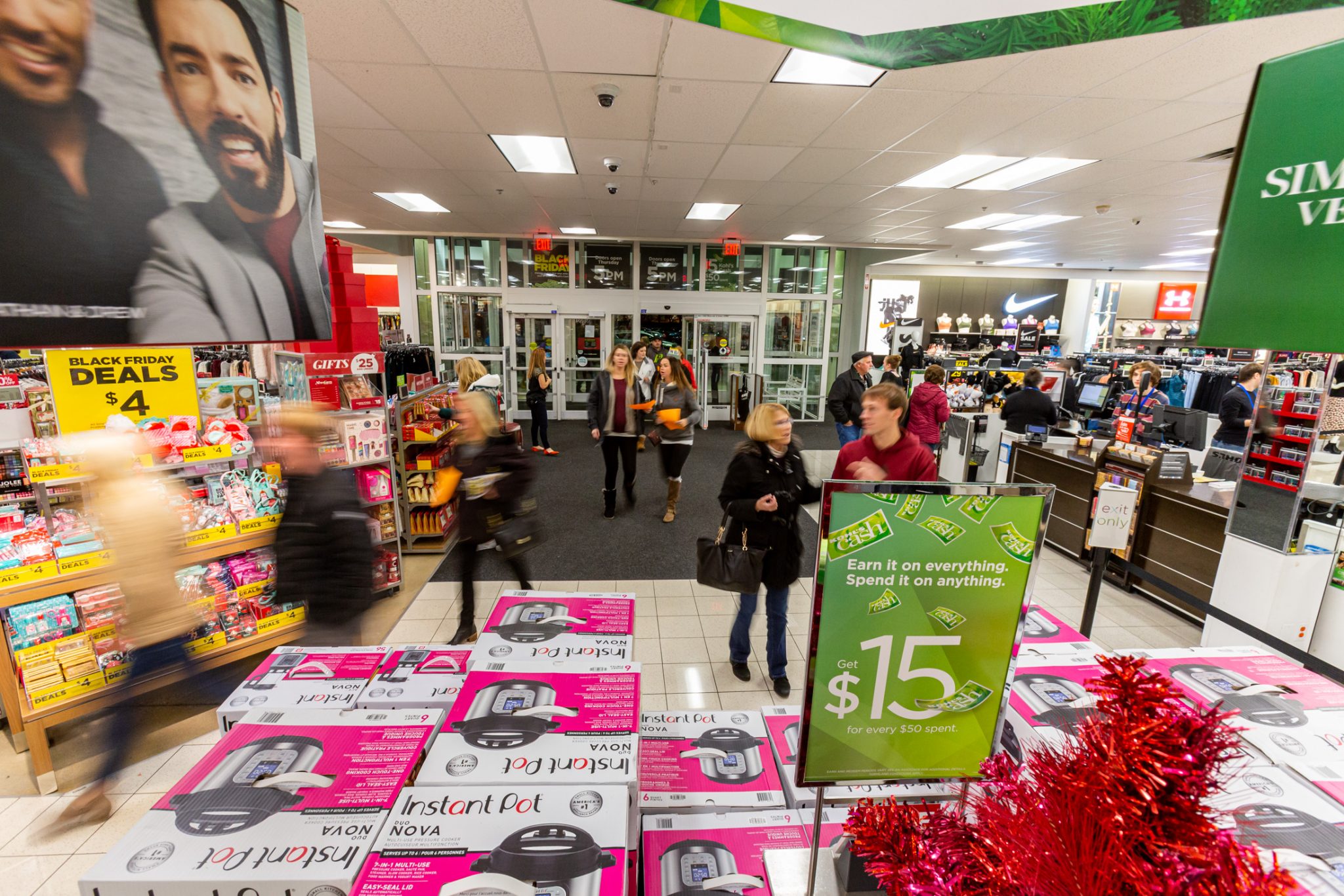Updated: Kohl’s, Walmart, Target Preach Flexibility for Holiday Season

Generally positive performance reported by Target, Kohl’s and Walmart for their most recent quarters included comments from each about managing inventory more closely amid uncertainty in forecasting holiday business.
Tighter inventory
Walmart didn’t provide a financial forecast for the second half and is managing inventory “closer in” (inventory declined 7.4% in Q2 ended July 31) than it has in years past, CEO Doug McMillon said. And Kohl’s, having suffered a “softer” start to back-to-school selling season – its sales in July declined from the previous month – expects consumers to start holiday buying in October fueled by a “potentially highly promotional” market, CEO Michelle Gass said. As a result, Kohl’s is “managing inventory tightly with an opportunity to “chase demand,” Gass said. Kohl’s Q2 (ended August 3) inventory declined 26%.
More sales per trip
“We are constantly revaluating where the customer is and what they need from us, and customers are coming [to the store] less often, but they are buying more while they are there,” said McMillon, reporting a 14% drop in customer traffic during the quarter, but a 27% jump in average sale, partly spurred by consumers buying products online and picking them up curbside.
“We have planned some aspects of the holiday and we are managing the near-term much more actively than we would have in a different environment,” he said. “We are carefully thinking through each of the holidays and how they may change as a result of what is happening, and for every one of the holidays over next few months we will have decide as we get closer. We are really making sure we are ready for the customer any way they want to shop.”
Walmart’s ecommerce sales rose 97% in Q2 despite all its stores being open when those of many competitors were closed. Meanwhile, Kohl’s, which reopened in many markets in May, posted a 58% rise in ecommerce revenue, with stores fulfilling 50% of those orders. Ecommerce accounted for 41% of Kohl’s Q2 revenue (a 23% decrease at $3.2 billion), up from 20% a year earlier.
Early Shopping
“We expect many customers to get ahead of their holiday shopping, and increasingly leverage digital and omni-channel capabilities,” Gass said. “We are making adjustments to drive and capture anticipated early holiday demand starting in October across all of the channels” of distribution. As we look ahead, we are planning for the crisis to continue to impact our business in the near term.
For holiday, Kohl’s will focus on home products – kitchenware was a strong seller in Q2 – toys, casual apparel and athleisure (Nike, Under Armour, Adidas and Champion brands). As previously disclosed, It also has pared back eight women’s apparel brands, including Iconix’s Mudd and Candie’s, Authentic Brands Group’s Juicy Couture and Hearst Corp.’s Elle, and will offer 40% fewer “choices” but carry a 50% deeper selection, Gass said.
Walmart was out of stock on some top selling items in Q2 – fishing gear and bicycles were top sellers – but inventory is returning to “more normalized levels,” McMillon said.
Updated, Wednesday, August 19:
On Wednesday, as it reported results for the quarter ended August 1, Target didn’t provide financial projections for the second half largely because it’s “difficult right now to forecast beyond a couple weeks at a time,” CEO Brian Cornell said in releasing for the second quarter ended.
Added COO John Mulligan: “When we write down a forecast, the only thing we know is that it is wrong. So how we adjust… as we see the data coming in is the most important thing. Mostly this is about conversations (with vendors) and then having the agility and flexibility” to make changes because everything is “moving very rapidly.”
The fourth quarter will be an “extended holiday shopping season” starting “earlier than ever before” with promotions beginning in October, Cornell said, adding that back-to-school sales have been “soft” thus far. For Halloween Target will continue to carry costumes but cut back its candy assortment. It also will offer “boo bags” for drive-up customers.
“There certainly will be a different rhythm to the shopping season and we are putting a premium on ease and convenience and delivering great value,” Cornell said. “We want to make sure our guests are aware that the top items and great value will be available throughout the season.”
Target’s revenue rose 24.7% to $23 billion as same-store sales at its brick and mortar locations rose 10.9%. Digital sales nearly tripled and accounted for 17% of total revenue, up from less than 10% a year ago.




